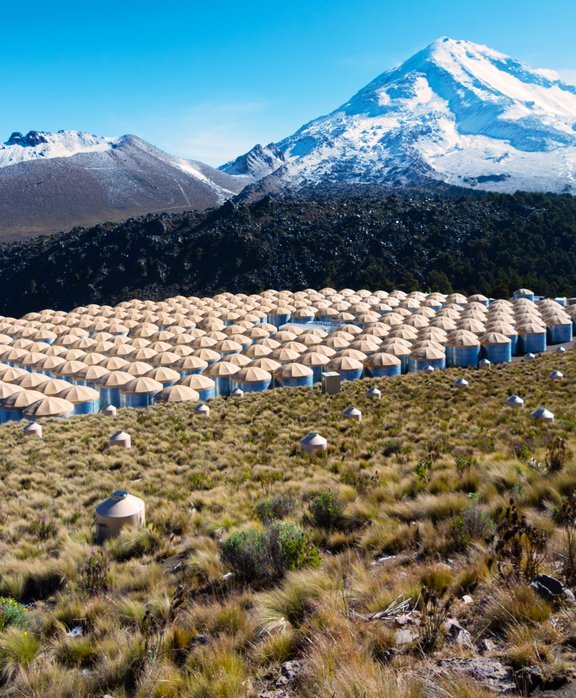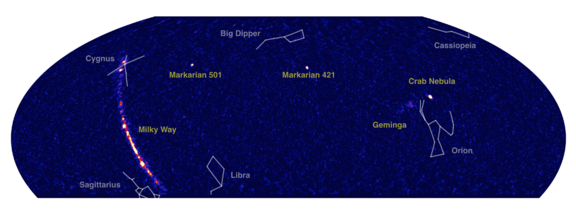HAWC – A very high energy gamma-ray observatory
At an altitude of 4100 m above sea level in central Mexico a gamma-ray telescope consisting of an array of 300 large tanks is located: The High Altitude Water Cherenkov gamma-ray observatory (HAWC).
HAWC measures the cascade of relativistic particles produced by the interaction of a high-energy gamma ray (or a cosmic ray) in the Earth’s atmosphere. As the particles travel into one of the 300 water tanks of the observatory, they produce a short flashes of Cherenkov light. By combining the amplitude and timing information of all the photon sensors in the observatory, the properties of the particle cascade can be determined. These measurements are used to identify which type of primary particle, a gamma ray or a charged cosmic ray, caused the particle cascade and the energy and direction of the primary particle. By accumulating all observations over the life-time of the observatory, a deep image of the very-high energy sky is generated.
The MPIK joined the HAWC collaboration in 2015. Since then it has played a major role in establishing a high-energy upgrade of the observatory, consisting of smaller tanks with single photon-multiplier tubes, deployed around the array of large water-Cherenkov detectors. This “outrigger” array became fully operational in August 2018 and increases the instrumented area of the observatory by a factor of four. The upgrade makes HAWC the most sensitive instrument for observations in the 1013–1014 eV domain by some margin, with huge promise for further discoveries here at the frontier of the electromagnetic spectrum.

